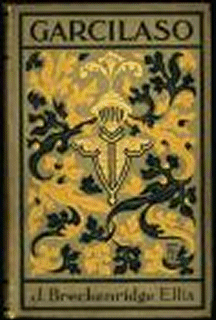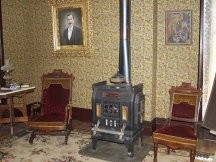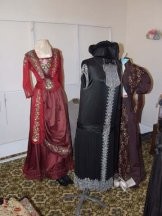History of Plattsburg and Clinton County
Once forming part of Missouri's western boundary, Clinton County was organized in 1833, twenty years before the founding of Kansas City, Missouri.
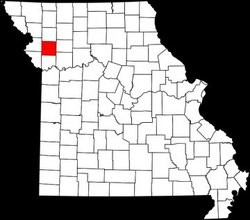

Early History
The town now known as Plattsburg was created to be the county seat of the newly formed Clinton County. It lost its boundary status in 1837 when the Indian Platte Purchase Territory extended the state border to Missouri.
Originally, Plattsburg was called Concord but two months later that name was changed to Springfield. However, it was found that there was another town by that name in Missouri. One year later, in January of 1835, the name "Plattsburg" was borrowed from Plattsburgh, New York, which is the county seat of Clinton County, New York. This in turn was named for the Vice President, George Clinton, who is the namesake for Clinton County, Missouri.
For a brief period of time during the 1830's, Plattsburg was home to a Federal land office for the newly opened areas of northern Missouri and was one of the farthest western non-military settlements in the United States until the Platte Purchase in 1836.
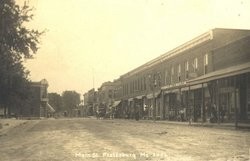 In the 1830's Plattsburg became a railroad center. It was a crossroads trading center and the location of a U.S. land office from 1843 to 1859. Depots were built by branch lines of the St. Louis, Kansas City, Hannibal & St. Joseph Railroads in 1871.
In the 1830's Plattsburg became a railroad center. It was a crossroads trading center and the location of a U.S. land office from 1843 to 1859. Depots were built by branch lines of the St. Louis, Kansas City, Hannibal & St. Joseph Railroads in 1871.
(Pictured: "Ye Old Town of Plattsburg" - Date unknown, however electric poles and buggies estimate 1910-1929)
During the Civil War, Plattsburg was divided between both Confederate and Federal forces. During this time, Plattsburg history shows at least one church denomination was split between northern and southern support; however, the county in general tended to sway more towards southern beliefs. Until a fire destroyed it in the mid 2000's, a Methodist Church was the oldest public building in Plattsburg. Built in 1859, the church was later used as a hiding place for Northern sympathizers, and in 1862, it served as a field hospital.
Areas around Plattsburg have long been a fertile and somewhat flat land, perfect for growing crops like tobacco and hemp, which may have accounted for their general inclination towards southern support. In addition, Clinton County is also a leading cattle county, and is a grain, dairy and poultry producer.
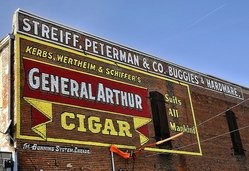 Modern facilities came early for Plattsburg, with homes built in the 1920's equipped for electricity; the original sewage system was installed in 1928. Most of Plattsburg's Antebellum homes were torn down and replaced during the late 1880-1900's by newer "Victorian" homes, many of which are still in existence today.
Modern facilities came early for Plattsburg, with homes built in the 1920's equipped for electricity; the original sewage system was installed in 1928. Most of Plattsburg's Antebellum homes were torn down and replaced during the late 1880-1900's by newer "Victorian" homes, many of which are still in existence today.
Plattsburg was once considered a cultural town, and housed an early school, the Plattsburg Methodist College. The college opened in 1855 and was later closed in 1897 under the private ownership of J. W. Ellis. The town also boasted an Opera House and was once even home to a Chautauqua Indian Tribe.
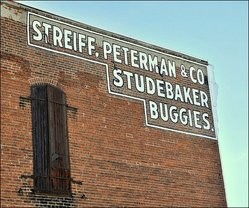
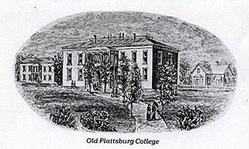
The Battle of Plattsburg was not in any sense a great battle and in comparison with many subsequent engagements, it may have been deemed insignificant. It was, however, a bona fide Civil War battle, among the few actual fights between Union and Confederate soldiers upon the soil of Northwest Missouri.
Thanks to James Crofutt of St. Joseph, Missouri for the following information:
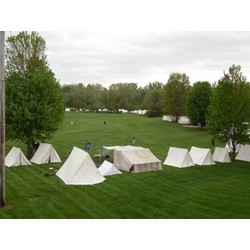
We have been unable to find in the various published histories of Clinton County any real account of this engagement, and this fact among others has led to the preparation and preservation of these accounts.
The fact that at this battle the blood of Missouri boys was shed is of itself enough to make it our duty to preserve from oblivion the story of struggle and victory.
But this is not all. The engagement viewed in the light of the moral effect and of the more substantial results achieved was by no means unimportant or insignificant. Whereas we do not have the room here to publish the entire story, we will, however, make an attempt to briefly cover the basic history of the original battle of Plattsburg.
What we do know is that the Plattsburg fight was fought on the morning of July 21st, 1864. It was fought just outside of town, between elements of the 89th Enrolled Missouri Militia and provisional Confederate forces of Major John Thrailkill.
These Confederate’s under Thrailkill were a part of the recruiting efforts of Colonel John “Coon” Thornton who had arrived in northwest Missouri earlier that year for the purpose of recruiting a Confederate force. The goal was to rally a sizable force of recruits and then to join up with Confederate General Sterling Price when he arrived in the area at the head of his army.
In early July, Colonel Thornton rode into Parkville and then Platte City. Both of these towns had garrisons occupied by elements of the 82nd Enrolled Missouri Militia, who’s ranks were known to be filled with ex-Confederate soldiers and southern sympathizers. They were commonly known to many as the Paw Paw militia. In Platte City, the Paw Paw’s formed up and cheered as Thornton rode into town. They stacked arms, took off their blue coats and opened up a secret stash of gray Confederate Jackets, put them on and eagerly joined Thornton.
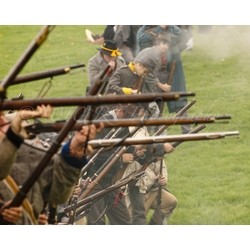 A few days later, Thornton had moved north to Camden Point and was attacked by Union Cavalry and Militia forces in a surprise attack. Thornton was soundly defeated and his forces put to the route. But he was able to regroup and then headed east towards Caldwell County towards Kingston. By this time, federal authorities were quickly mobilizing what few active units were in the area and also activating those units of the Enrolled Missouri Militia that were known to be reliable. The chase was on and Thornton had to divide his force into smaller elements to avoid capture and in order to continue to operate.
A few days later, Thornton had moved north to Camden Point and was attacked by Union Cavalry and Militia forces in a surprise attack. Thornton was soundly defeated and his forces put to the route. But he was able to regroup and then headed east towards Caldwell County towards Kingston. By this time, federal authorities were quickly mobilizing what few active units were in the area and also activating those units of the Enrolled Missouri Militia that were known to be reliable. The chase was on and Thornton had to divide his force into smaller elements to avoid capture and in order to continue to operate.
In early June, a part of two companies of the 89th Enrolled Missouri Militia had been activated and assigned to duty in Plattsburg and Ridgley.
The Enrolled Missouri Militia or EMM for short, was the Civil War version of the Army National Guard
These men were enlisted into units but allowed to stay home and tend to their farms. In the event of an emergency or other needed duties, they could be called to duty and then would serve as soldiers in the field. By 1864, the majority of EMM troops were issued standard blue uniforms and muskets when called up for duty.
By early July, the Company of the 89th EMM at Ridgley had been ordered to Plattsburg and the garrison now consisted of Company B (50 men) under the command of Captain Poe and Company E (50 men) under the command of Captain Turney. The entire garrison was under the command of Captain Poe.
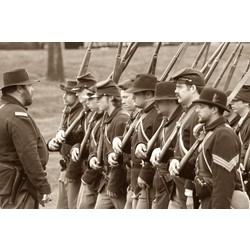 They were receiving reports almost daily on the movements of Thornton and Thrailkill and on the evening of July 20, 1864 Captain Poe received word that a part of Thornton's men was heading towards Plattsburg and the garrison should stay alert.
They were receiving reports almost daily on the movements of Thornton and Thrailkill and on the evening of July 20, 1864 Captain Poe received word that a part of Thornton's men was heading towards Plattsburg and the garrison should stay alert.
That next morning, Poe received word that Thornton's advance had been sighted a few miles from Plattsburg and possibly heading towards the town. Learning of their approach, Poe ordered a patrol and Captain John W. Turney, with his company of fifty men, started out to reconnoiter.
Just outside of town, Captain Turney discovered a column of Thornton’s guerrillas, numbering about 400 men, under Major Thrailkill. They had approached Plattsburg from the east and contact had been made at 9:00 a.m. on July the 21st. Placing his men in position and forming a line of battle, Captain Turney discovered a flag of truce approaching.
Major Thrailkill by the following written communication, demanded the surrender of the town:
COMMANDING OFFICER AT PLATTSBURG: JULY 21, 1864.
I hereby demand an immediate surrender of the town. We are not bushwhackers, but Confederate soldiers. Your men will be treated as prisoners of War.
John Thrailkill Major,
commanding Confederate forces.
The message was received by Captain Turney and he immediately sent a runner back to Captain Poe with the note. The following reply was returned by Captain Poe:
Maj. John Thrailkill: July 21, 1864
Sir: We are not here for the purpose of surrendering, but to defend the flag of our Country. –
B.F. Poe Captain,
Commanding Post.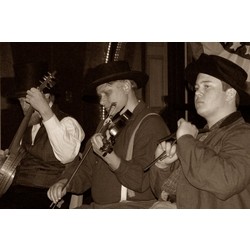 Thrailkill did not appreciate the response and immediately ordered his men to dismount and began to deploy them for battle. Captain Turney, with his men, opened a vigorous attack upon the enemy and for a short period of time checked his approach to the town. But Captain Turney was killed by the first fire from the enemy.
Thrailkill did not appreciate the response and immediately ordered his men to dismount and began to deploy them for battle. Captain Turney, with his men, opened a vigorous attack upon the enemy and for a short period of time checked his approach to the town. But Captain Turney was killed by the first fire from the enemy.
Thrailkill pressed the attack with his main battalion and deployed his other Battalion, the Paw Paw’s to the flank of Turney's company. Lieut. McCullough who was now in command of Turney's company saw the threat and faced being cut off. He immediately fell back to the town with the body of Captain Turney, and joined Captain Poe who had heard the heavy fighting and had assumed Captain Turney's company had been cut off and captured.
Captain Poe had already ordered a retreat and many of his men had already departed. But seeing the arrival of McCullough and realizing that they had not been captured, but rather put up a vigorous defense, Captain Poe issued orders canceling the retreat and prepared to defend the town, with those men he had left.
In addition, a provisional company of citizen’s had been quickly organized when the fighting was heard and were ready to serve as a home guard. Captain Poe deployed his men in and around the town courthouse and was preparing to defend it. But Thrailkill did not see fit to attack, as he had received word that a pursuing force of Missouri State Militia Cavalry from Cameron were pressing his rear and only a short distance away.
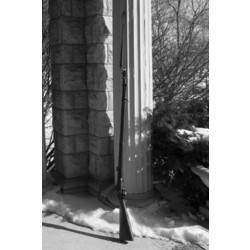 Thrailkill called off the attack and thus history officially records the battle of Plattsburg as a Union victory. Captain Poe and Captain Turney’s vigorous resistance repulsed Thrailkill, compelling him to withdraw his force in the direction of Haynesville.
Thrailkill called off the attack and thus history officially records the battle of Plattsburg as a Union victory. Captain Poe and Captain Turney’s vigorous resistance repulsed Thrailkill, compelling him to withdraw his force in the direction of Haynesville.
Union Casualties were light, with only Captain Turney being killed and 1 man being mortally wounded and dying several days after the fight. 3 other men were slightly wounded making for a total of 2 killed and 3 wounded. Confederate Casualties have never been able to be determined because it was reported that they carried off their dead and wounded.
However, subsequent reports from the pursuing MSM Cavalry and prisoners who were captured in the pursuit seem to point towards a Confederate loss of almost the same. At least 1 killed and 2 or 3 wounded.
Historical Homes Walking Tour
 517 W Clay
517 W Clay
Built in 1889. Queen Anne Eastlake Cottage. Local residents reveal for as long as they can remember the house has always been various shades of pink. The home has 24 corners and a cupola that children call the "secret room."
 605 W Clay Ave
605 W Clay Ave
Built in 1896. Queen Anne style. Stucco siding was removed to reveal the original clapboards. It took 75 gallons of paint to turn this is into a "painted lady." The home has been featured in numerous regional and national publications.
 615 W Clay Ave
615 W Clay Ave
Built 1906 by an owner of a lumber mill, so the house was constructed of the finest lumber available. It is called a "Steamboat Gothic" in reference to the upper front porch.
 701 W Clay Ave
701 W Clay Ave
Victorian built 1901. At one time it was a schoolhouse and a boarding house where the single female teachers lived.The "witches hat" in the front is original but the "witch's tower" towards the back is relatively new, within the last 25 years or so.All the detail work on the outside is original.
 700 W Riley
700 W Riley
Built 1908 by Colonel Turney. The room sizes are quite nice with a nicely appointed library and formal living and dining on the main level. The breakfast area boasts a cafe booth with an inviting view of the stone fence and yard. The porch is enticing on a warm evening for that small town passing of neighbors and friends out for a stroll.
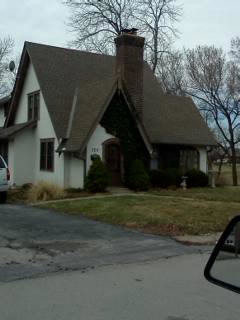 300 S 8th Street
300 S 8th Street
Built 1929 by Dr. W.B. Spalding. The home is an English Cottage Style home. It has a formal living room and dining room. There is a breakfast room with build in Butler's Pantry. At attached screened porch adds hours of pleasure with the view of the well landscaped yard.
 801 W Clay Ave
801 W Clay Ave
Built early 1900's. Victorian style. Asbestos siding was recently removed to reveal the original wood siding underneath. Upper railing and gutters on the roof are original, as well as the wind-up doorbell on the front door. The home was renovated in 2011.
 800 W Clay Ave
800 W Clay Ave
Built-in 1903. Victorian Queen Anne. Notice all the ornate details that are original to the home, including the solid wood doors and railings. Restoration of the interior occurred in the late 1990's.
 512 W Clay Ave
512 W Clay Ave
Early 1900's. One-story Victorian style. Made from solid oak. Used to be a farm, the garage was a barn. Has a widow's walk, where women could watch for their men to return home from the sea.
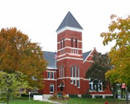 501 W Clay Ave
501 W Clay Ave
First Christian Church, built 1891.
 302 S Birch
302 S Birch
Built 1887. Spanish style. Remodeled in 1932. Rear bedroom was once a sleeping porch. It features a drive-thru garage.
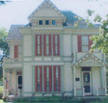 304 S Birch
304 S Birch
Riley Carmack Museum built 1889. Was a family home until 1968. The long shutters are original to the house. The closed-shuttered window on the north is a faux window, put there to balance the upstairs/downstairs facade. It is furnished with locally donated items and represents upper middle-class Plattsburg life.
 406 S Birch
406 S Birch
Built 1918, finished in 1921. Prairie Style. It has remained in the same family since it was built. The limestone was quarried locally in Clinton County, which is common to many other houses in town.
 500 S Birch
500 S Birch
Pink Rosebud Bed & Breakfast, built 1878. Originally constructed as a square wood frame house. In 1914 additions to the home were made, that were completed in 1922. This included the lions and fountains, and the stone. Stone came from the Federal Courthouse in Kansas City. It became a B&B in 1996.
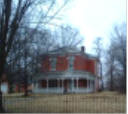 506 S Birch
506 S Birch
Built 1838, the oldest home on the tour. The house's exterior was once a rosy brick. The bricks were all hand-made. The walls are 12 inches thick. The porch was added in the 1870's to make it a Victorian. The back was put on in later years. During the Civil War the house served as a doctor's quarters. The doctor serviced both sides so they wouldn't burn his house down.
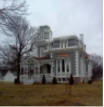 501 S Birch
501 S Birch
Built in 1890's. Second Empire style. A walnut spiral staircase leads to the third-floor cupola. Renovations were done in 2010.
 401 W Clay Ave
401 W Clay Ave
Built 1913. Colonial Revival style. The home's exterior paint palette is copied from very early pictures of the home.
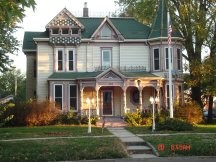 304 W Clay Ave
304 W Clay Ave
Built in 1893. Victorian. Features a hand-carved staircase. The original owner had farmland that surrounded the house and he would climb to the third story, which had an opening to the roof, to survey his crops.
 301 W Clay Ave
301 W Clay Ave
Built in 1883. Eastlake style. The home is completely framed in solid walnut. It features the original pocket doors, push-button light switches, and wind-up doorbell. It also has a calling card brass plate on the front door for missed visitors.
 301 W Broadway
301 W Broadway
United Methodist Church, built 1894.
 200 W Broadway
200 W Broadway
Built in 1908.Victorian style with a wrap-around porch. A deed found in the home reflects the house sold for $3,000 in 1910. Many families have lived in the home but it is most known as the home of the local pharmacist at the time, who lived there for many years. The home was converted to a bed & breakfast in 1992 and reverted back to a single-family home in 2004.
 206 W Broadway
206 W Broadway
Built in 1921. American Foursquare style. You could order the "core" of this home from the Sears & Roebuck catalog -- it was shipped in pieces. Has one of the only knotty pined lined garages, which was added in the 1970's.
 214 W Broadway
214 W Broadway
Built early 1900's. At one time was an Episcopal church, where a large steeple once adorned the upper roof. Inside the home, the original woodwork still stands.
 400 W Broadway
400 W Broadway
Built in the early 1900's. Two-Story Farmhouse with a wrap-around porch. Home of a local physician who saw patients in his home.
 501 W Broadway
501 W Broadway
First Baptist Church, built 1854.

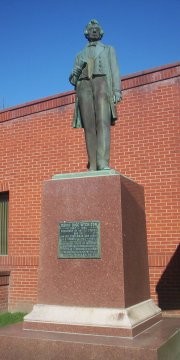 Born in Kentucky in 1807, Atchison attended college when he was only fourteen. While attending the Transylvania College, he became a classmate of Jefferson Davis. Atchison graduated with honors at age 18, and by 1830, Atchison had moved to western Missouri to practice law. Four years later he was in the Missouri State Legislature.
Born in Kentucky in 1807, Atchison attended college when he was only fourteen. While attending the Transylvania College, he became a classmate of Jefferson Davis. Atchison graduated with honors at age 18, and by 1830, Atchison had moved to western Missouri to practice law. Four years later he was in the Missouri State Legislature. 
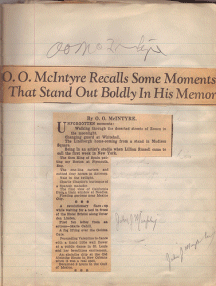 Oscar Odd McIntyre was a journalist who was the most widely read syndicated columnist of his day. He wrote about life in New York City in his daily column "New York, Day By Day." It was syndicated across America for 25 years in the 1910s, 1920s, and 1930s.
Oscar Odd McIntyre was a journalist who was the most widely read syndicated columnist of his day. He wrote about life in New York City in his daily column "New York, Day By Day." It was syndicated across America for 25 years in the 1910s, 1920s, and 1930s.
